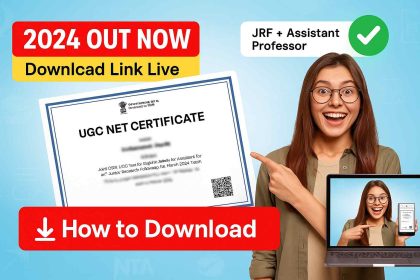Student Loan Forgiveness Blocked: The recent decision by the U.S. Education Department to halt student loan forgiveness applications for three months has caused widespread concern among borrowers. This directive affects millions of individuals relying on income-driven repayment (IDR) plans and Public Service Loan Forgiveness (PSLF) programs. In this article, we will break down the implications of this decision, who is affected, and what borrowers can do next.
Education Department’s Memo: The Details
According to a memo obtained by The Washington Post, the Education Department has instructed student loan servicers—including MOHELA, Aidvantage, and Nelnet—to stop processing all student loan forgiveness applications for three months. The memo specifically states that all applications related to IDR plans and loan consolidations must be paused.
Key Directives in the Memo
- Servicers must stop accepting and processing new IDR and loan consolidation applications.
- Borrowers already enrolled in an IDR plan cannot recertify their income for three months.
- The freeze affects both online and paper applications.
- The suspension could be extended or shortened depending on future decisions.
This decision has left many borrowers uncertain about their financial future, especially those who depend on IDR plans to manage their student loan payments.
Impact on Borrowers: Higher Payments and Fewer Options
For borrowers currently on IDR plans, this temporary block means a significant financial burden. IDR plans such as Pay As You Earn (PAYE), Income-Based Repayment (IBR), and the Saving on a Valuable Education (SAVE) plan are designed to adjust monthly payments based on income, making repayment more manageable.
Consequences of the Block
- Borrowers may be forced to switch to standard repayment plans, increasing their monthly payments substantially.
- Individuals enrolled in PSLF may face additional hurdles in meeting the 120-payment requirement for loan forgiveness.
- Borrowers will have fewer options to adjust their repayment terms, potentially leading to financial strain.
With IDR plans on hold, millions of borrowers could face higher repayment obligations, making it more difficult to meet everyday financial needs such as rent, utilities, and groceries.
Comparison of Loan Repayment Plans
| Repayment Plan | Monthly Payment | Total Cost Over 20 Years |
| SAVE Plan | $200 | $48,000 |
| IBR Plan | $350 | $84,000 |
| Standard Plan | $600 | $144,000 |
| Extended Plan | $450 | $108,000 |
This table illustrates how much more borrowers may have to pay if they are forced off IDR plans.
Public Service Loan Forgiveness (PSLF) Program: Uncertainty Ahead
The PSLF program remains open for new enrollments, but there is a catch. Borrowers must be on an IDR plan to qualify for forgiveness, which is not currently an option due to the block. This means:
- Borrowers who are in PSLF but not yet enrolled in IDR plans may not qualify for forgiveness.
- Those already making payments under PSLF may face delays in meeting their required 120 payments.
- The uncertainty surrounding PSLF has left many public servants questioning their financial future.
Why Did the Education Department Issue This Memo?
The block on student loan forgiveness applications stems from a legal battle over the SAVE plan. Missouri Attorney General Andrew Bailey and six other states challenged the Biden administration’s authority to implement the SAVE plan, leading to a federal court ruling against it.
Key Events Leading to the Block
- August 2023: The SAVE plan was introduced to lower payments and offer a faster path to forgiveness.
- Lawsuit filed by Missouri and six other states, arguing that the plan exceeded the administration’s authority.
- The 8th Circuit Court of Appeals imposed an injunction, halting the plan.
- The Education Department responded by blocking all IDR applications, even though the court ruling did not explicitly require it.
This legal uncertainty has put millions of borrowers in limbo, unsure of what will happen next.
Timeline of Key Events
| Date | Event |
| August 2023 | Biden Administration introduces the SAVE plan |
| October 2023 | Missouri AG and six states sue to block SAVE plan |
| January 2024 | 8th Circuit Court issues an injunction against SAVE |
| February 2024 | Education Department halts all student loan forgiveness applications |
What Borrowers Can Do Next
If you are affected by this block, here are some steps you can take:
- Stay Informed: Follow updates from the Education Department and loan servicers.
- Contact Your Loan Servicer: They may be able to provide guidance on alternative repayment plans.
- Explore Temporary Hardship Programs: Some borrowers may qualify for deferment or forbearance.
- Prepare for Higher Payments: If you are forced into a standard repayment plan, adjust your budget accordingly.
Conclusion: Student Loan Forgiveness Blocked
The Education Department’s decision to halt student loan forgiveness applications for three months has significant consequences for millions of borrowers. The lack of access to IDR plans could lead to higher payments and financial distress. While legal battles over the SAVE plan continue, borrowers should stay informed and explore alternative repayment options.
FAQs Related To Student Loan Forgiveness Blocked
No, the Education Department has temporarily blocked all new and pending applications for IDR plans for three months. Borrowers will have to wait for further updates.
Yes. While PSLF is still open for enrollment, borrowers cannot switch to an IDR plan, which may affect their eligibility for loan forgiveness.
Contact your loan servicer to explore deferment or forbearance options. Additionally, stay informed about possible changes to repayment policies.




